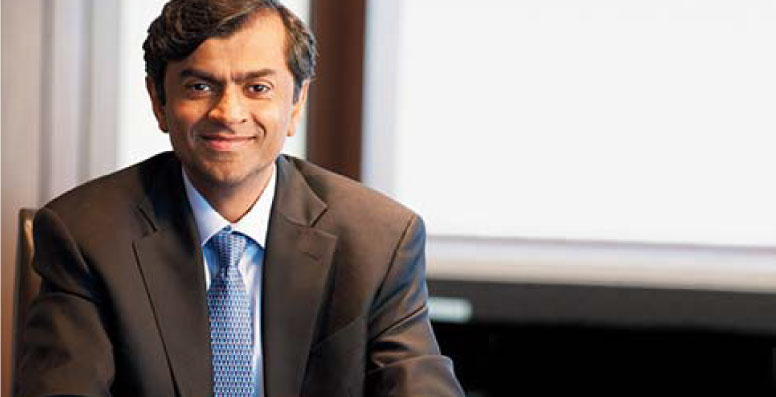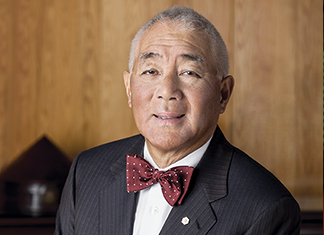How to be an Aspirational Investor
- Caifu Magazine | by Caifu Global
- EN
“Investing is not about markets, it’s about you.”
Ashvin B. Chhabra – Managing Director, Chief Investment Officer, Merrill Lynch Wealth Management
In a world of job insecurity and depleted pensions, global workers are seeking how to invest their wealth more wisely to protect themselves against unexpected financial crises.
Ashvin B. Chhabra, president of Euclidean Capital in New York, has explained in his 2015 book “The Aspirational Investor: Taming the Markets to Achieve Your Life’s Goals” why goals – not markets – should be the primary focus of an investor’s strategy. While it is tempting to chase the next big stock, bond, or hedge fund, people should invest to preserve their lifestyle or to make an impact in the world.
“Whatever matters most to you – paying for your kid’s education, saving for retirement, starting your own business, endowing your favourite charity, or travelling the world – you need a road map to help you achieve both your essential and aspirational goals,” Chhabra told CAIFU Friday, March 18. “Investing in yourself is more important than investing in the markets.”
Chhabra’s innovative approach to managing wealth, which he has labelled the Wealth Allocation Framework, is more about setting strategies to meet personal and professional goals than it is about beating the market – the traditional definition of financial success. Investors should address the following questions with their financial advisers while diversifying their investment portfolio:
- What do you need for immediate safety? A house?
- What do you need to be comfortable? How much is needed for a safe retirement?
- What do you aspire to? Having enough in the bank for your children’s college tuition? Or a round-the-world excursion?
After answering those questions, an investor should look to possess three different investment buckets – a safety portfolio consisting of protective assets; a market portfolio to obtain growth and stability in the long term; and an aspirational portfolio to help achieve aspirational goals. “You must understand the purpose of each investment you make,” Chhabra added. “Diversification will not be enough to guarantee safety or create wealth.”
Trained as a physicist, Chhabra explained he is familiar with unstable systems. “Markets are unpredictable, and even broadly diversified portfolios can experience extreme volatility,” he continued. “Investors should expect to experience several bubbles and crashes over their investing lifetime. When markets crash they don’t care about any individual investor’s needs. Therefore your safety portfolio must be appropriately sized to provide the protection you need.”
Keeping Up With the One Percent
While countless investors want to know how those on the Forbes 400 obtained their wealth, Chhabra wrote that the super-rich – those on the list with a net worth of at least U.S. $1.55 billion – did not earn their wealth by building conventional portfolios; they took “idiosyncratic risks” that are specific to a particular asset.
For the average investor to imitate the investment strategies of those listed on the Forbes 400 is not necessarily sensible, he wrote. “Making decisions based on success stories, while ignoring failures, is a common behavioural pitfall known as 'survivor bias,’ and often leads to missteps and disappointment.”
He also warned investors not to naïvely copy the strategies of Warren Buffett, Berkshire Hathaway’s CEO and chairman and the United States’ most successful investor, because his success is hard to replicate.
While making the Forbes 400 list is an achievement in itself, staying on it is an even bigger challenge. The 2014 Forbes 400 ranking revealed that 36 billionaires were poorer than they were the previous year, and 26 people dropped off the list, Chhabra wrote.
A trend that has picked up momentum since the global economic downturn in 2008 is impact investing – or investments made into companies, organizations, and funds with the intention to generate a measurable, beneficial, social or environmental impact alongside a financial return. “Impact investing, which is an example of aspirational investing, has an objective of not only making money, but to making a positive impact in the world,” Chhabra pointed out.
One example of this is the Chan Zuckerberg Initiative, a foundation founded by Facebook founder and CEO Mark Zuckerberg and his wife Priscilla Chan to advance human potential and promote equality in areas such as health, education, scientific research and energy.
A Must-Read About Investing
Perhaps the hardest aspect of writing the book, Chhabra admitted, was finding a voice that was both authentic and resonated with the intelligent reader. “It took a lot of time and some trial and error to make the book accessible to intelligent readers from many different backgrounds,” he added.
Readers have commented to Chhabra that he put their investment strategies in writing in easily readable, jargon-free prose.
Prominent economists and financial experts have also recognized and praised “The Aspirational Investor.”
“Chhabra is the world’s preeminent thinker on how to adopt financial decisions to address effective wealth management,” wrote Bruce Greenwald, Robert Heilbrunn professor of finance and asset management at Columbia University. “This book lays out his insights and a wonderfully clear and compelling way.”
“Ashvin Chhabra is one of the smartest and wisest investment experts I know,” wrote Eric Maskin, Adams University professor at Harvard University and a 2007 Nobel Laureate in economics. “This book explains how to break down a seemingly very complex problem – how we should invest our money-into manageable steps. I recommend it highly.”
“The Aspirational Investor” is now available on Amazon in the United States and in Canada for Kindle, in hardcover and audiobook form. HarperCollins published the North American edition, while Beijing Cheers Book Company will be publishing the Chinese edition later in 2016.















